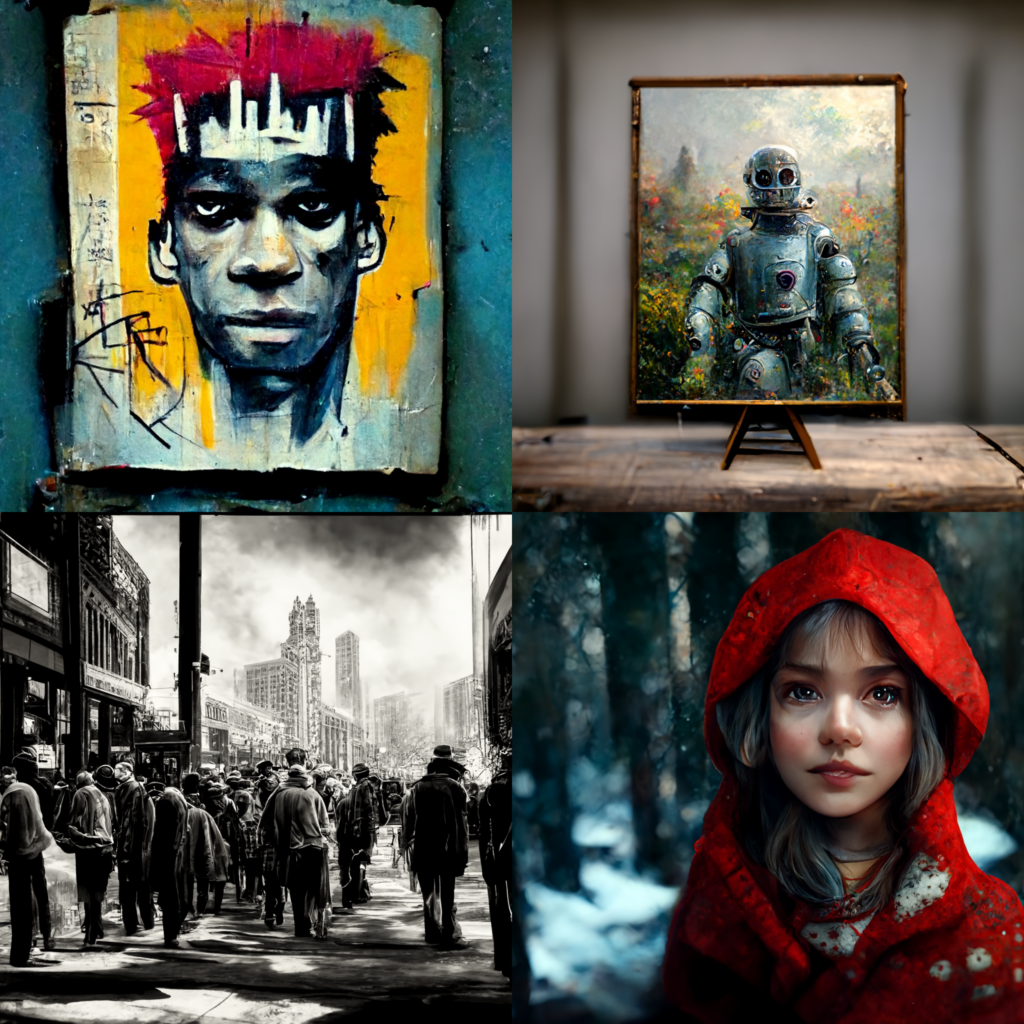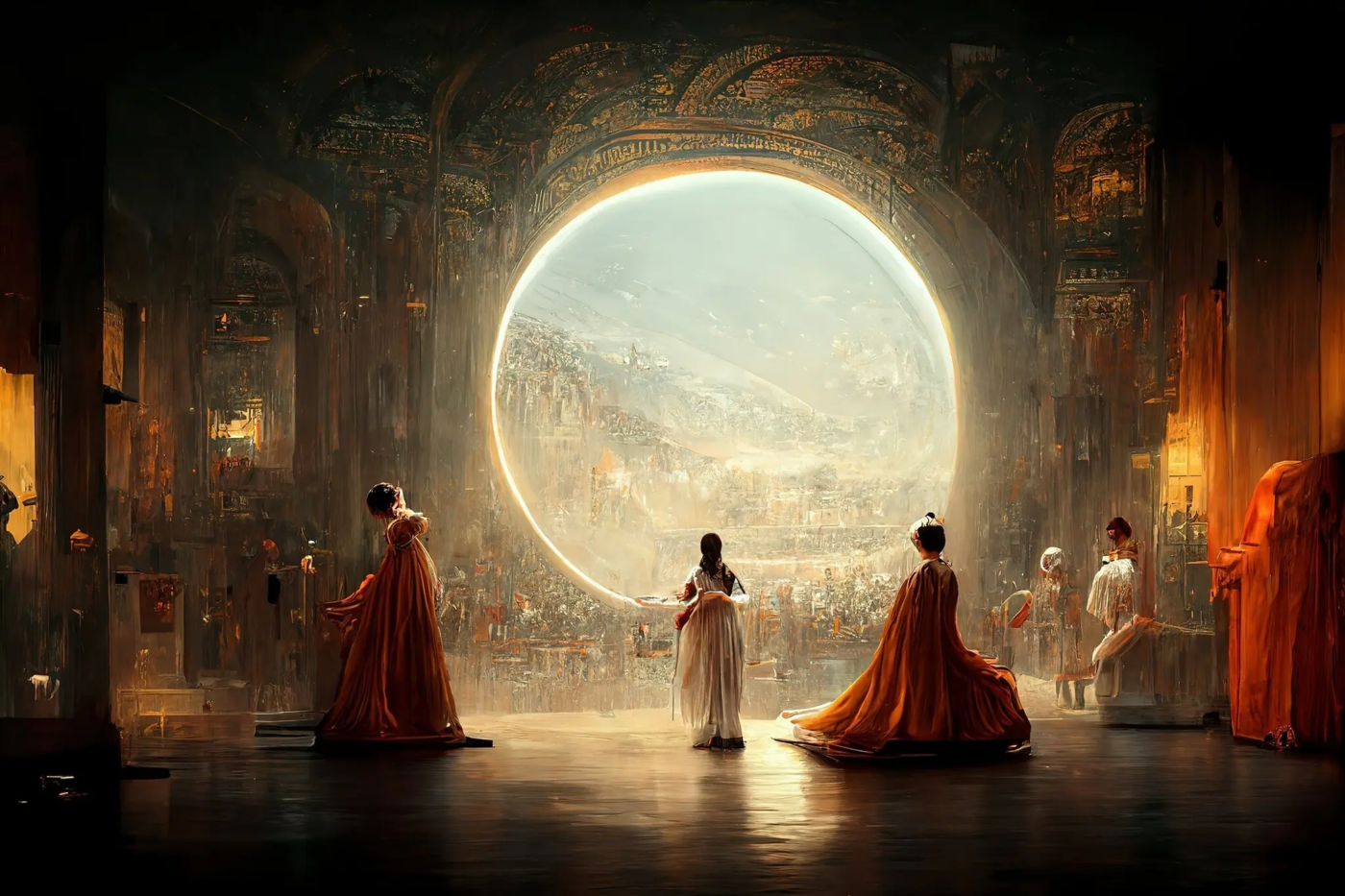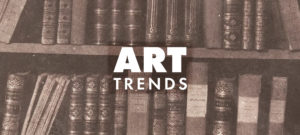Whenever new technology promises to revolutionize the art world, you can sense the anxiety that washes over the art community. Now is one of those times. With the arrival of text-to-image programs such as DALL-E-2 and Midjourney, we’re all currently witnessing the rise of artificial intelligence in art. Many living, breathing artists feel as if their livelihoods are at stake, and understandably so. This is the end of art as we know it.

Well…sort of. If it’s any consolation, there have been several moments throughout history when new technology changed how we create art in dramatic ways. Yet artists still exist. When photography arrived in the mid-1800s, critics dismissed it as a lazy substitute for art, or worse—the end of painting. It turns out photography was never a substitute, but a new medium in and of itself. Artificial intelligence has the same potential, as explored in a recent article by The Atlantic.
Text-to-image AI tools are still in their infancy, but they’re growing and evolving extraordinarily fast. Meanwhile, there are ongoing debates over the ethics and monetization of such tools and the legitimacy of AI-assisted art. It’s too early to get definitive answers to many of these questions surrounding artificial intelligence, but if you’re intrigued, we’re here to shed light on how these tools work and what artists think of them.
We’ll also share thoughts from a recent Instagram Live interview with glitch artist Rob Sheridan and show examples of Threadless Artist Shops featuring designs created with the assistance of AI tools.
How does artificial intelligence work?
Good question! DALL-E-2, Midjourney, and Stability Diffusion are the most talked about AI applications, and they each have their own unique features and interfaces. But when you strip away the bells and whistles, they all function similarly:
You enter a text prompt, then the application creates a new image based on your description using a huge database of existing imagery as a guide. The process usually only takes around a minute. In most cases, the images generated are stunning, if not bizarre.

The Confusion About Artificial Intelligence
A part of what makes artificial intelligence in art so controversial stems from the confusion over how each of these applications generates their results. In our interview with Rob Sheridan, he breaks down what AI technology is designed to do:
“There’s this idea that it’s taking actual pieces of art that artists put out there and recompiling them to make new images…What it does is it looks at millions and millions of images and it starts to learn what we expect things to look like…It’s trying to absorb not just art, but our understanding of what art is.”
In other words, applications like Midjourney use their databases for reference rather than to patch together artwork that already exists. Users can input a particular artist’s name or titles of their works in hopes to channel their style, but the generated images will not incorporate the artist’s actual work. To test this out, we used the text prompt “Mona Lisa by Leonardo Da Vinci,” and this is what Midjourney generated:

Unlocking New Avenues for Creativity
The jury is still out on how artificial intelligence will impact copyright laws in the future. As it stands right now, AI applications generally grant permission to use generated images commercially as long as you follow their specific guidelines.
So, if you’re an artist, it’s up to you how much or how little you incorporate these tools in your creative process. Maybe the thought of artificial intelligence makes you queasy and you’d rather stay away from it entirely. Or maybe you can envision it being a major component in future projects. At the very least, these applications can help cultivate ideas.

One of the most fun aspects of using these imperfect tools is when they misinterpret your prompts and create something entirely unexpected. This could lead you down a path you’ve never considered and open your mind to new creative possibilities.
Artists on Artificial Intelligence
“Art is dead, dude. It’s over. A.I. won. Humans lost,” Colorado State Fair entrant Jason M. Allen told The New York Times this year. With this level of cynicism, you would think he lost the competition.
But on the contrary, Jason won first place in the fair’s digital category with an AI-generated image. “I’m not going to apologize for it…I won, and I didn’t break any rules,” he explained.
Naturally, this didn’t sit well with his fellow entrants who accused him of cheating. Therein lies another controversy. Many artists feel that using artificial intelligence in art is a way of cutting corners.

It’s up for debate whether AI gives users an unfair advantage or if it’s just another shiny new tool for artists to use. Filipino news website Rappler recently asked artists how they felt about AI-generated art, and the responses were mixed.
Some artists view it as devaluing the work of artists in a creative industry that’s already problematic. Others see it as less of a threat and more a way to make creation easier for less-skilled users.
Thoughts from a Leading Artist in the Threadless Community
We recently talked about this topic with Rob Sheridan, one of the top-sellers at Artist Shops and a multimedia artist who’s known for experimenting with technology. He tends to fall on the more optimistic side of the debate and doesn’t believe artificial intelligence will replace the human element in art.
He explained, “I see it as something that’s going to expand and democratize creativity, and open up new possibilities, and create new projects that humans come into. Because ultimately, humans are the artists, and how they present this stuff and contextualize it is what matters.”
Rob began experimenting with AI earlier this year, and he’s already experienced firsthand how it can open up new creative opportunities. While exploring all the wrong ways he could use Midjourney, he ended up creating the “Events from Hell” series that made the Met Gala look like a nightmare of glitz and gore. He’s now working with a sculptor to make hand-painted busts of a popular character from this series. In this case, AI was the conduit for multiple layers of creativity and collaboration.
Even if artists aren’t interested in experimenting with AI tools, Rob believes they should at least educate themselves on the subject.
“I’ve found that, at times like this when there’s new technology that comes up in the creative fields, it’s best to embrace it, learn it, understand it. Even if you don’t ultimately incorporate it in your workflow, it’s good to know what everyone else is working with, what’s out there, what’s happening…[If you] get mad about it and reject it, you risk being left behind. Not a lot of people who held onto their dark rooms are participating in commercial photography right now,” he said.
Watch the full interview here.
Artist Shops Featuring AI-Generated Art
Threadless allows Artist Shop owners to sell AI-generated art under the following conditions:
- The AI tool used to generate the art must grant the artist permission to use the imagery commercially.
- The generated image cannot infringe upon IP rights and must adhere to our Community Safety and Anti-Hate Policies.
If you’re curious how AI-generated art translates on merchandise such as t-shirts, the Artist Shops below incorporate artificial intelligence in varying degrees and approaches.
Hivemind

Design Federation
As we mentioned before, the presence of artificial intelligence in art is still in a nascent stage and will continue to evolve drastically in the coming days, months, and years. At this point, we can only predict the level of impact it will have on the art world in the long term.
Come back to Creative Resources to stay on top of the latest Art Trends.



